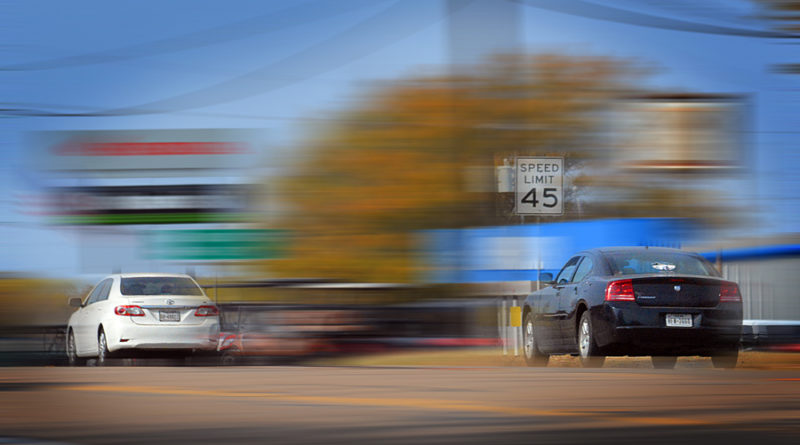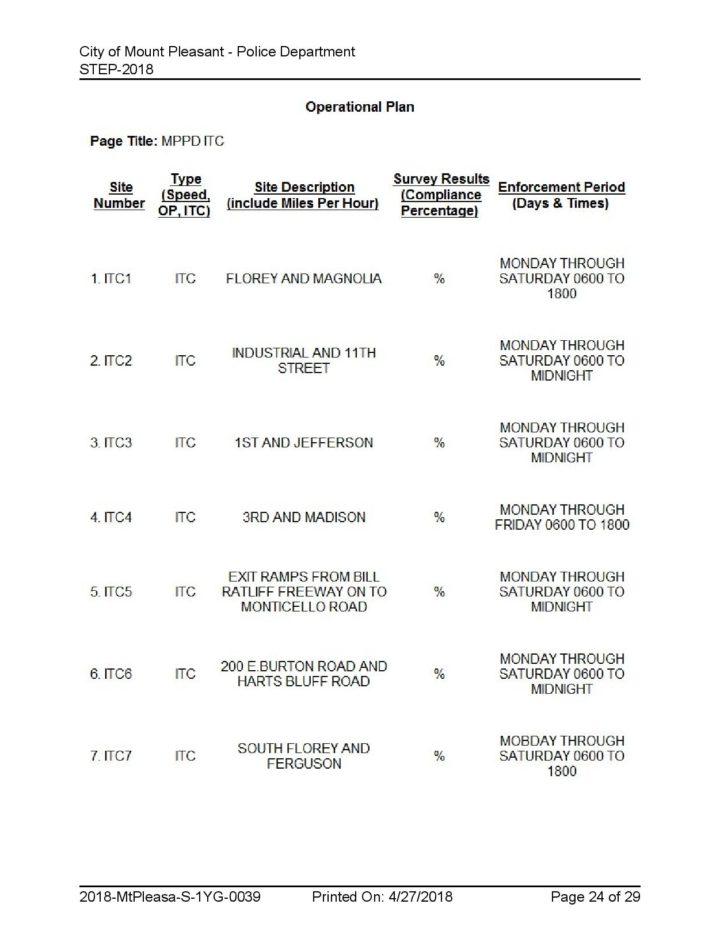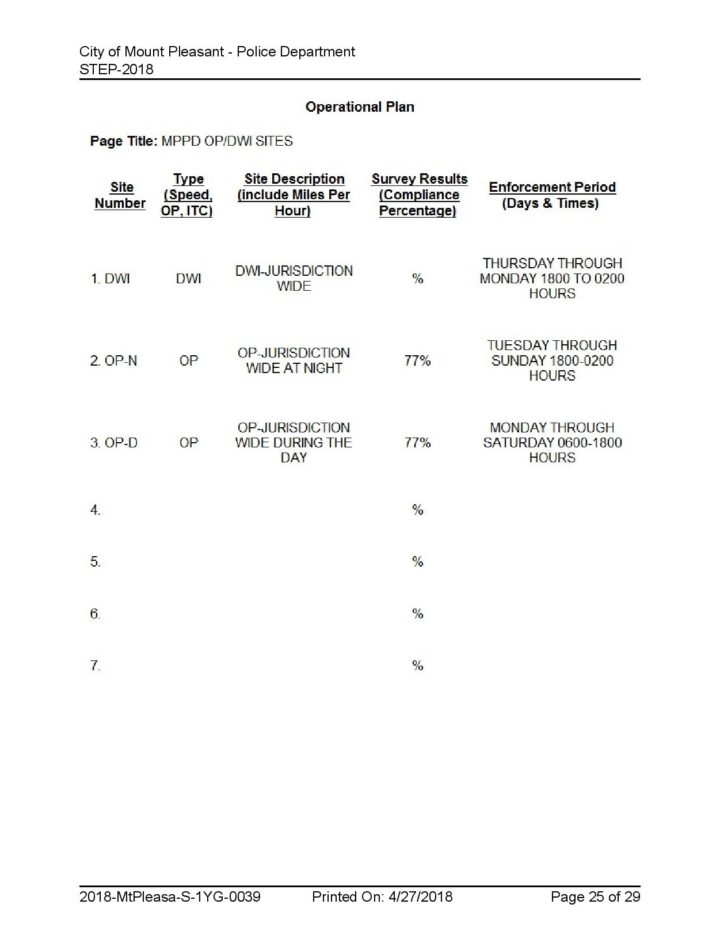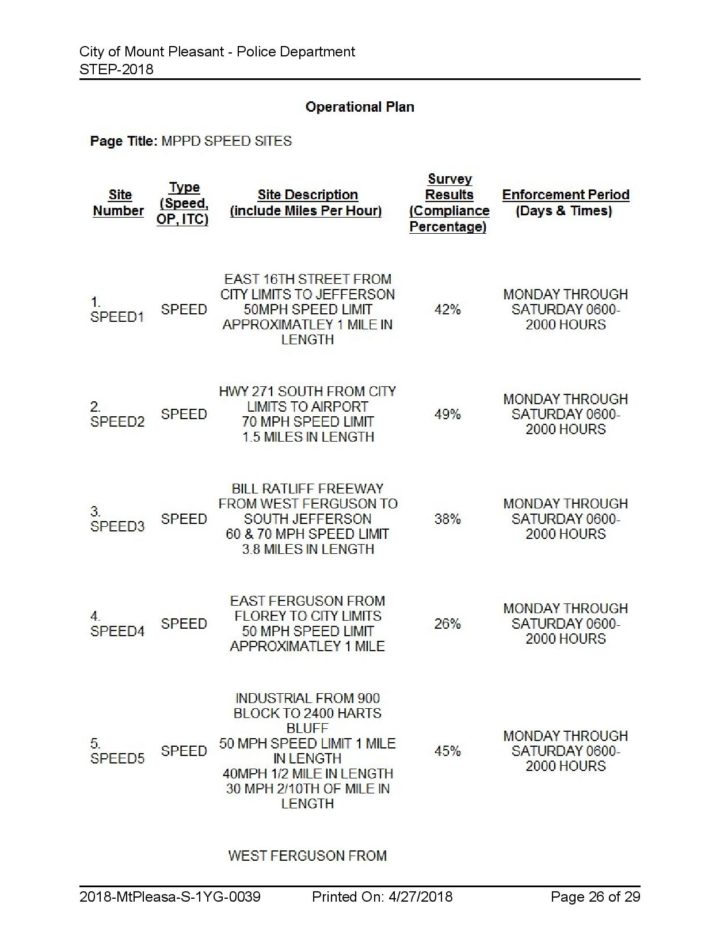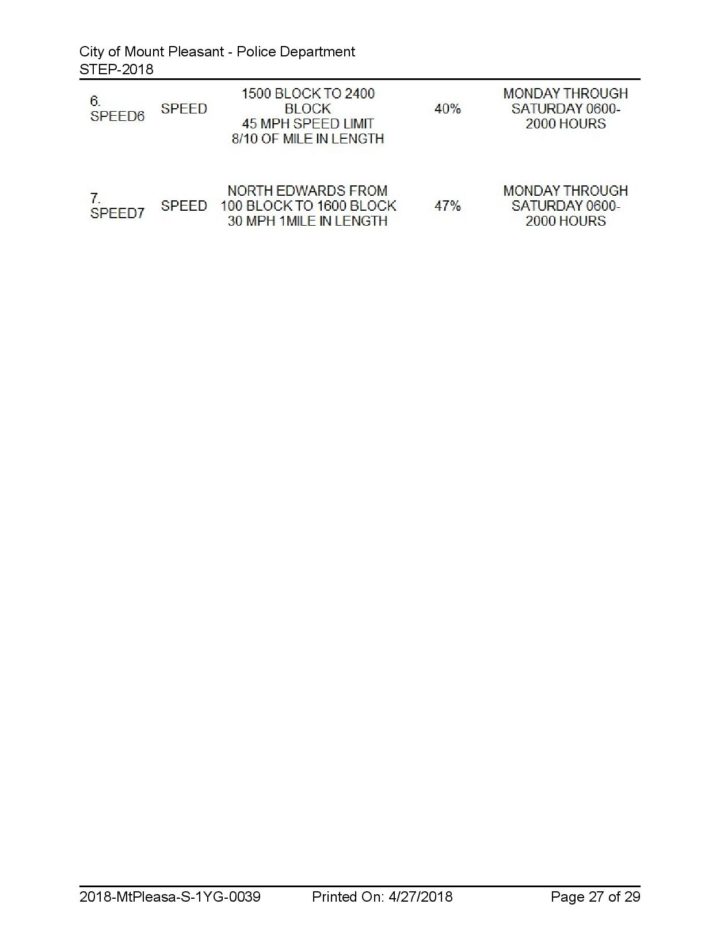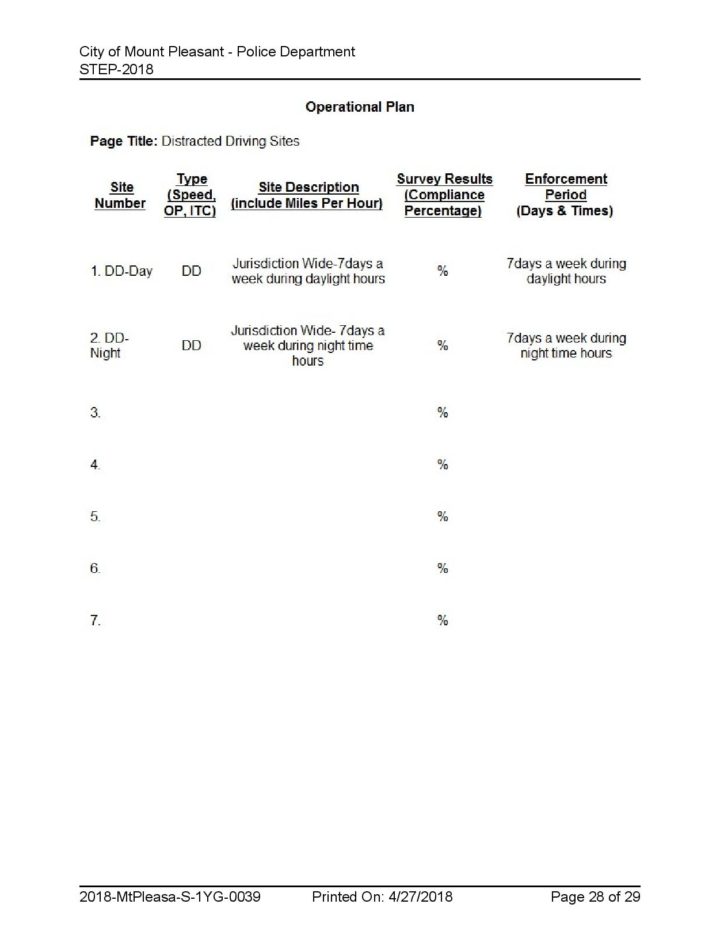TxDOT grant sets target numbers for traffic tickets

Moving into a new year of an enhanced traffic enforcement plan that’s reduced traffic accidents from 675 in 2015 to 565 in 2017, it’s working so well that the state wants Mt. Pleasant officers to write an additional 500 speeding tickets in 2018. That’s 500 more than the 2,313 issued in the baseline year, 2016.
The town’s on track to collect $1.3 million in all categories of citations and budgeted to return the state a $500,000 mandated share. Speeding is one of five violations budgeted for increased enforcement by terms of a Texas Department of Public Safety (TxDOT) grant. If Mt. Pleasant patrols meet the 2018 state goals, the $40,000 grant will return an additional $97,000 to the state’s general fund.
Other goals include 15 additional alcohol or drug impaired arrests, 600 more seat belt tickets and 500 new stop sign or traffic signal violations. In a new category, they’re looking for 200 cell phone-related write ups.
In 2014, when Governor Gregg Abbot was the Texas attorney general, in Opinion No. 1056 he said state laws were written intending to prohibit “using quotas to require or encourage officers to take action in response to traffic violations.” Single spaced and arranged alphabetically from Abilene to Wichita Falls, Mt. Pleasant is but one on a three page list of the TxDOT money’s participating jurisdictions.
The TxDOT numbers targeting bad driving are not quotas, but “performance measures” used by administrators to assure that everybody’s on the same page about safer streets and highways.
The Austin revenue windfall is a happy coincidence.
“About ten years ago legislators became concerned about speed traps set up as ways for towns to generate revenue,” said Marcus Sandifer, TxDOT spokesman for the Atlanta District. “So they wrote a law requiring collections over certain amounts to be surrendered to the state.”
In March, officers wrote 223 citations and another 25 warnings for speeding and intersection violations. There were no warnings written in seatbelt or distracted driving categories.
“Our officers see first hand what happens to children and adults who are not wearing seatbelts in crashes and they choose not to give warnings,” said Assistant Chief Kyle Holcomb. Seat belt tickets for adults run $150. For children 8 and under, that’ll be $220. Payment plans are available. Community Service is an option with time calculated at $13 an hour.
“Children rely on adults to keep them safe and our officers are trying to make sure adults do just that,” the Assistant Chief said. The grant application requires the city to conduct surveys gathering traffic data used to determine locations tagged for enhanced enforcement.

 The picturesque view at the neighborhood intersection of South Florey and Magnolia is a site where the state’s calling for ticket writing for running stop signs. The intersection of Industrial Boulevard and 11th street lends itself to potential lane, intersection and violations of speed limits dropping from 40 to 30.
The picturesque view at the neighborhood intersection of South Florey and Magnolia is a site where the state’s calling for ticket writing for running stop signs. The intersection of Industrial Boulevard and 11th street lends itself to potential lane, intersection and violations of speed limits dropping from 40 to 30.
“For speeding, we conducted surveys of major roads in the city using a stealth radar trailer,” he said.
Assisting the city with the TxDOT requirement to conduct “information campaigns regarding enforcement activities,” go to easttexasjournal.com for a listing of 17 city-wide streets in the state-issued “operational plan.”
Honey holes include the four-lane, 45-mile an hour downhill run continuing west from the 1800 block of West Ferguson, where radar’s got a clear view from a patrol unit positioned a half-mile away.
There’s a sweet spot at 11th and Industrial Boulevard where inbound traffic coming from the direction of I-30 chokes down to a divided turn lane coinciding with a drop from 40 to 30 miles per hour, a perfect layout for multiple lane changing, speeding and 11th street stop sign violations, visible to a patrol unit nestled back against a shrub-lined fence to the south.
And conveniently located no more than a minute away from the combination I-30 east-bound Exit Ramp / Burton Road stop sign at Industrial. (Eleven percent of drivers rolling through intersections got warning tickets in March – everybody else got the real thing.)
Neighborhoods are not exempt. Drivers shouldn’t be lulled into complacency by the small town appeal of the tree-shaded intersection of Magnolia and South Florey. Looking left or right from Florey, there’s an open field of view from multiple blocks away in either direction.

Coming from the south, running smooth into town up the stretch of Jefferson’s 30 mph limit posted just north of Ferguson road, patrol units blend easily into the parking lot on the east side of the street a block from the courthouse.
At Van Buren and West 1st, officers on foot work in tandem with patrol units issue radio alerts of seat belt violations.
Get this – city wide, surveys reveal that only 41 percent of drivers comply with posted speed limits. The TxDOT goal is jacking that up to a modest 43 percent. The survey says 87 percent of us wear seatbelts. The state wants that number to be 89 percent.
The grant mandates training required for the city’s 12 patrol officers. Generally, four of the town’s 12 patrol units are on the street for any given shift. The grant that demands sharpening of patrol officer focus also adds to the paperwork load. At the end of each shift additional reporting requirements added to routine daily reports call for reporting of grant-related work activities.
An all-inclusive look at local enforcement including violations of city codes shows reflects 3,274 cases filed year to date in Muncipal Judge Jerry Wesson’s court. Another 741 warrants have been issued for failure to appear.

